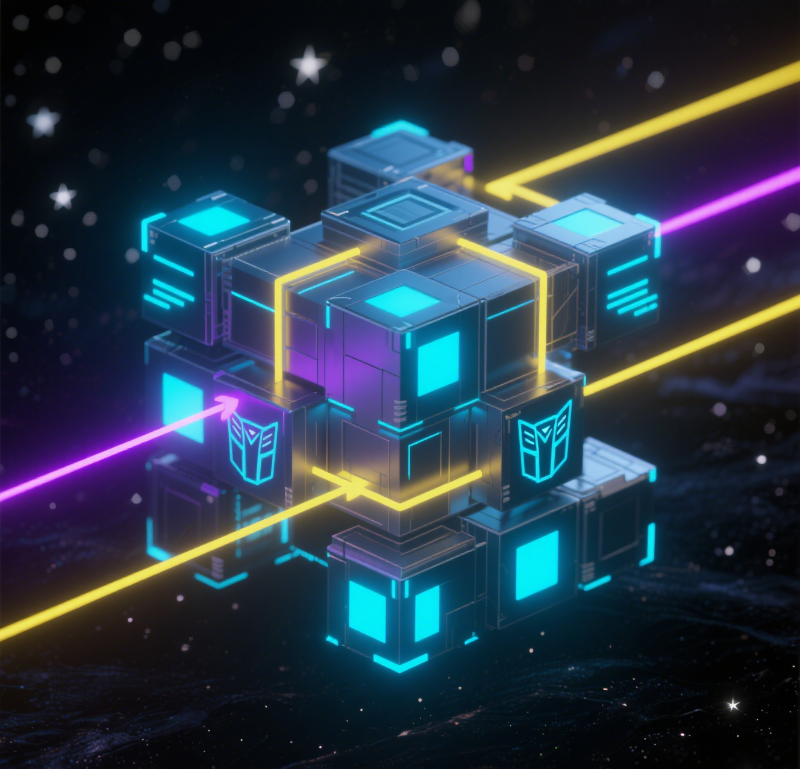1. Introduction: The Transformer Takeover
Imagine powering the most advanced AI applications today – from chatbots that understand nuance to systems generating stunning images or code. Chances are, a Transformer model is doing the heavy lifting under the hood. It’s not an exaggeration: Transformer architectures now drive roughly 80% of cutting-edge AI breakthroughs. But this incredible power comes at a steep price: an insatiable hunger for GPU resources.
Consider the scale: Training a model like GPT-4 is estimated to have required over 25,000 NVIDIA A100 GPUs running for months. While new hardware like NVIDIA’s Blackwell GB300 promises dramatic improvements – potentially slashing inference latency by 10x compared to its Hopper predecessor – the fundamental challenge remains. As models grow larger and more complex (think multi-modal systems handling text, images, and audio simultaneously), the demand for powerful, efficient GPU compute explodes.
This explosion creates a critical operational headache for AI teams: managing sprawling, multi-GPU clusters efficiently. Idle resources, complex orchestration, and soaring cloud bills become the norm, threatening project viability. This is precisely where intelligent resource management becomes non-negotiable. Solutions like WhaleFlux are engineered to tackle this head-on, demonstrably cutting GPU idle time by 40% or more while significantly slashing overall cloud infrastructure costs. As we scale AI ambitions, mastering GPU efficiency isn’t just nice-to-have; it’s the key to sustainable innovation.
2. How Transformers Work: The GPU Hunger Games
To understand why Transformers are such GPU gluttons, let’s peek under the hood. Forget complex equations; think about core mechanisms:
- The Self-Attention Headache: The magic of Transformers lies in their “self-attention” mechanism. This allows the model to understand the relationships between words (or pixels, etc.) anywhere in the input sequence, regardless of distance. However, calculating these intricate relationships across vast sequences requires massive parallel computation. Every element needs to be compared to every other element simultaneously. This parallelism is perfect for GPUs, but it demands immense raw compute power (FLOPS) and incredibly fast memory access.
- Precision Matters: Training and running these models often requires high numerical precision (like FP16 or FP32) to maintain accuracy and stability during complex calculations. This high precision consumes significant GPU memory (VRAM) and demands high memory bandwidth to feed data to the processing cores fast enough. Running out of VRAM halts training or inference instantly.
- Size is Everything (and Growing): Context windows (how much data the model considers at once) are ballooning – from thousands to millions of tokens. Larger contexts enable more powerful reasoning but exponentially increase the computational and memory burden, especially within those self-attention layers.
The Hardware Reality Check: Choosing the right GPU is crucial, balancing capability and cost:
- NVIDIA H100 vs. H200: The H200 is a game-changer for large contexts, offering roughly 1.7x more memory bandwidth than the H100. This directly translates to handling much larger sequences or batches without slowdowns, vital for cutting-edge model training and inference.
- NVIDIA A100: The workhorse of the AI boom, still highly relevant for many FP16/FP32 workloads, offering excellent performance and stability.
- NVIDIA RTX 4090: Don’t underestimate the consumer flagship! Its 24GB of fast GDDR6X memory makes it a surprisingly potent and budget-friendly option for inference tasks, fine-tuning smaller models, or development work. While not suited for massive distributed training, it’s a cost-effective piece of the puzzle.
Enter WhaleFlux: Managing a cluster mixing H200s, H100s, A100s, and RTX 4090s manually for optimal Transformer workloads is a nightmare. WhaleFlux acts as your intelligent GPU traffic controller. It analyzes the specific demands of each layer and stage within your Transformer model – knowing that attention layers crave bandwidth (H200), while embedding layers might be fine on powerful consumer cards (RTX 4090) – and dynamically allocates tasks to the most suitable available GPU in your fleet. This ensures no GPU is overwhelmed or underutilized based on its specific strengths.
3. Training Challenges: Where Costs Spiral
Training large Transformer models is where GPU costs can truly spiral out of control. The challenges are multifaceted:
- The Idle GPU Tax: Perhaps the biggest hidden cost? Studies suggest 30-50% of GPU time in typical fragmented clusters is wasted – idle. GPUs sit waiting for data, synchronization, or the next task while still incurring cloud costs or consuming power and depreciating. This inefficiency directly hits the bottom line.
- Energy & Cooling Overload: High-performance GPUs are power hogs. A single RTX 4090 can peak at 450 watts. Multiply that by dozens or hundreds of cards, add cooling systems, and the energy bill becomes a major operational expense. Poorly managed clusters exacerbate this waste.
- The Supply Chain Crunch: Accessing the most powerful GPUs, like the H100, remains challenging. Delivery delays of 2-3 months are still common, stalling critical projects and forcing compromises.
- Global Shifts & Dependencies: Geopolitical factors add complexity. Initiatives like China’s plan to deploy over 115,000 H100/H200 equivalents demonstrate massive demand persisting despite restrictions. Simultaneously, efforts to reduce dependency on NVIDIA’s CUDA ecosystem, like Huawei’s GPGPU push, highlight the industry’s search for alternatives and diversification. This points towards inevitable hybrid GPU environments.
These factors combine to make large-scale Transformer training incredibly resource-intensive and expensive. Simply throwing more GPUs at the problem is financially unsustainable and operationally inefficient.
4. WhaleFlux: Your Transformer Efficiency Engine
Confronting the challenges of Transformer training and deployment requires a dedicated efficiency solution. WhaleFlux is purpose-built as the intelligent GPU resource management layer AI enterprises need to scale effectively while controlling costs. It delivers through core pillars:
Smart Orchestration & Workload Routing:
WhaleFlux goes far beyond simple scheduling. It possesses deep awareness of the heterogeneous capabilities within your cluster (H200’s bandwidth, H100’s FP16 muscle, RTX 4090’s VRAM). It intelligently analyzes the real-time demands of your Transformer workloads – identifying compute-heavy attention layers, memory-bound embedding stages, or precision-sensitive operations – and dynamically routes each task to the optimal GPU available. Need massive bandwidth for a large context window? WhaleFlux prioritizes the H200. Running inference on a moderately sized model? It might efficiently utilize an RTX 4090. This minimizes bottlenecks and ensures every GPU cycle is productive.
Rock-Solid Stability at Scale:
Deploying billion-parameter models for production inference demands unwavering reliability. WhaleFlux provides robust cluster management, monitoring, and failover mechanisms. It delivers a 99.9% uptime SLA, ensuring your critical AI services remain online and responsive, even under heavy, fluctuating loads.
Predictable Cost Control:
WhaleFlux tackles cost from multiple angles. By drastically reducing idle time (directly translating to lower cloud bills or better utilization of owned hardware) and optimizing workload placement for efficiency, the savings are substantial. Furthermore, WhaleFlux offers a transparent and predictable leasing model for the GPUs themselves: NVIDIA H100, H200, A100, and RTX 4090. Crucially, we provide dedicated access, leased monthly (minimum commitment), not by the hour. This aligns perfectly with the sustained nature of AI training cycles and production deployments, eliminating unpredictable hourly billing spikes and simplifying budgeting.
WhaleFlux GPU Support Matrix:
| GPU Model | Best For | WhaleFlux Optimization Benefit |
| NVIDIA H200 | Large-batch training, Massive context windows | Leverages 1.5x ↑ bandwidth vs H100 for attention layers; Smart allocation ensures H200 handles peak demands. |
| NVIDIA H100 | FP16/FP32 mixed workloads, General training | Achieves ~30% cost reduction via maximized utilization and reduced idle time; Ideal core workhorse. |
| NVIDIA A100 | Proven FP16/FP32 performance, Stable workloads | Efficient integration into mixed fleets; Cost-effective option for specific tasks. |
| RTX 4090 | Inference, Fine-tuning, Development, Budget-conscious tasks | Utilizes 24GB VRAM for low-latency inference; Significant cost savings vs. datacenter GPUs for suitable workloads. |
5. Real-World Impact: Case Study Snippet
Theory is good, but results matter. Consider the experience of a fast-growing AI startup focused on customizing large language models (LLMs) for enterprise clients:
Challenge:
They were training medium-sized Llama-3 derivatives for specific industry use cases. Their initial 64x NVIDIA H100 cluster, while powerful, suffered from significant idle time during data loading and synchronization phases. They also struggled with thermal throttling during peak summer temperatures, slowing down training convergence. Their cloud costs were becoming prohibitive, threatening their ability to iterate quickly.
Solution:
They implemented WhaleFlux for intelligent cluster orchestration and management. WhaleFlux provided granular visibility into GPU utilization and introduced predictive scaling based on workload patterns. Its thermal optimization features proactively managed workloads and cooling to prevent throttling.
Results with WhaleFlux:
- 35% Reduction in Overall Training Costs: Primarily driven by slashing idle GPU time and optimizing resource allocation across the cluster lifecycle.
- 22% Higher Average GPU Utilization: WhaleFlux ensured H100s were kept busy processing model layers, not waiting.
- 15% Faster Convergence Rate: By preventing thermal throttling and ensuring stable, optimal performance, training runs completed significantly faster, accelerating their time-to-market.
“WhaleFlux didn’t just save us money; it gave us back precious engineering time previously spent babysitting the cluster and worrying about costs. We can now focus purely on model innovation,”reported the startup’s CTO.
6. Conclusion: Future-Proof Your AI Stack
The Transformer revolution shows no signs of slowing down. Models will continue to grow larger, more complex, and demand even greater computational resources. The hardware landscape is also evolving rapidly, moving towards inevitable hybrid environments combining top-tier NVIDIA GPUs with alternative accelerators.
In this dynamic landscape, chasing raw peak FLOPS alone is a losing strategy. The true competitive advantage lies in efficient resource management. Maximizing the utilization of every GPU cycle, minimizing waste, and ensuring stable, cost-effective operations are paramount for sustainable AI innovation.
WhaleFlux provides the essential efficiency engine for the Transformer era. By intelligently orchestrating workloads across mixed GPU fleets (H100, H200, A100, RTX 4090), eliminating idle time, guaranteeing stability, and offering a predictable monthly leasing model, WhaleFlux empowers AI teams to:
- Deploy models faster without resource bottlenecks.
- Achieve significant cost savings (often 30%+).
- Scale confidently knowing infrastructure is optimized.
- Focus on core AI development, not infrastructure headaches.
Ready to deploy Transformers without the burden of GPU waste and unpredictable costs? Explore how WhaleFlux can transform your AI infrastructure. Discover the power of intelligently managed, dedicated H100, H200, A100, and RTX 4090 clusters – leased monthly for stability, optimized daily for peak efficiency and savings. Visit our website or contact us for a personalized efficiency assessment today!

